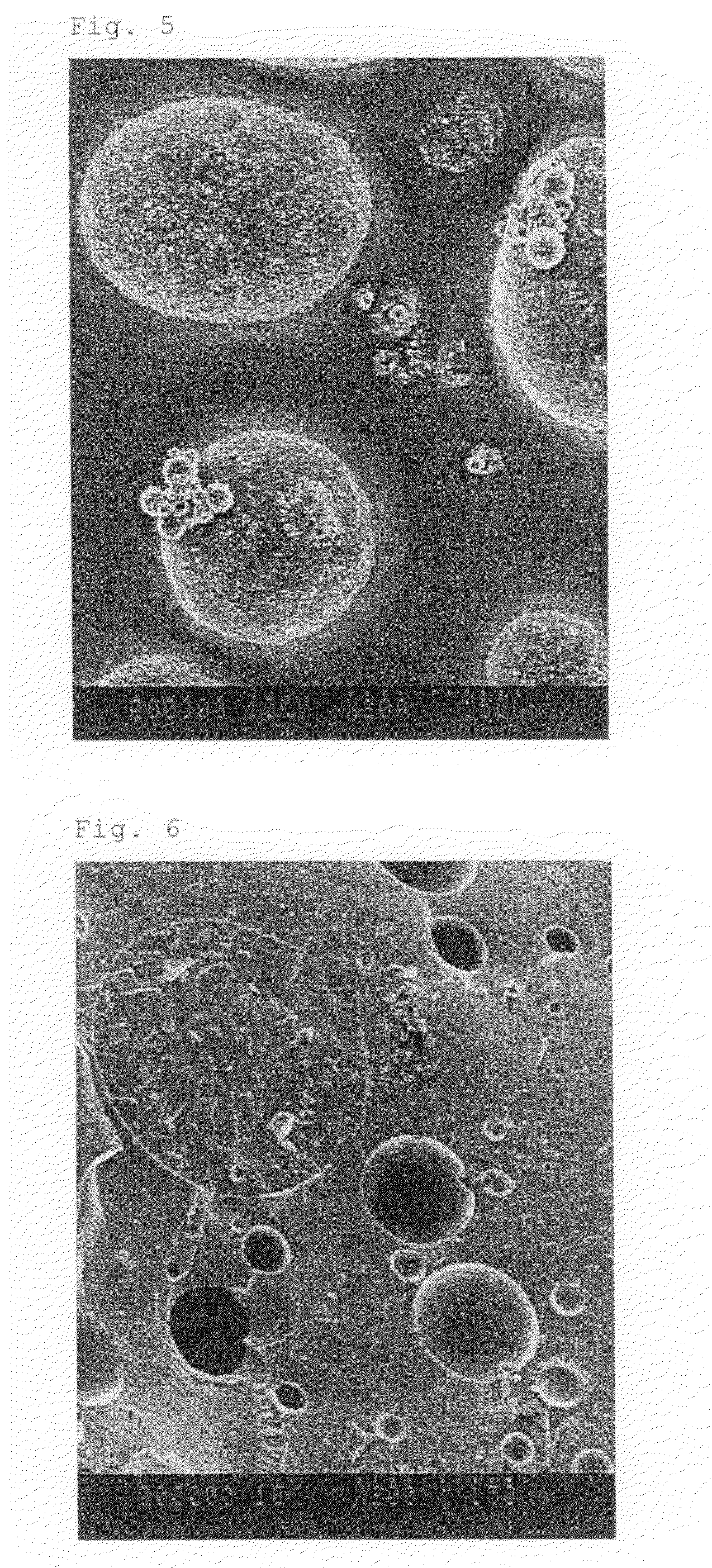Process for Producing Spherical Polymer Powder and Spherical Powder Comprising (Meth)Acrylic Block Copolymer
a technology of acrylic block and polymer powder, which is applied in the direction of cellulosic plastic layered products, natural mineral layered products, transportation and packaging, etc., can solve the problems of inability to manufacture prior art polymer powders as molding materials, inability to meet the requirements of molding materials, and inability to manufacture prior art polymer powders. to achieve the effects of high-quality molding, high powder flowability, and low temperature characteristics
- Summary
- Abstract
- Description
- Claims
- Application Information
AI Technical Summary
Benefits of technology
Problems solved by technology
Method used
Image
Examples
production example 1
(Meth)acrylic Block Copolymer Synthesis
[0227]The following procedure was carried out for obtaining a (meth)acrylic block copolymer. A 5-liter pressure reactor, after replacement of the inside atmosphere by nitrogen, was charged with 6.88 g (0.048 mol) of copper bromide, 784 g (6.12 mol) of BA and 28.70 g (0.224 mol) of TBA, and stirring was started. Then, a solution of 13.20 g (0.0369 mol) of diethyl 2,5-dibromoadipate (initiator) in 71.40 g of acetonitrile (after bubbling with nitrogen) was added, and the whole was stirred for 30 minutes while the solution temperature was raised to 75° C. After arrival of the solution temperature at 75° C., 0.832 g (0.0048 mol) of pentamethyldiethylenetriamine (ligand) was added to initiate the polymerization to give an acrylic polymer block.
[0228]After the start of polymerization, the polymerization mixture was sampled at timed intervals; the sample size was about 10 mL per sampling. Each sample solution was analyzed by gas chromatography and the ...
production example 2
Styrene-isobutylene-styrene (SIBS) Block Copolymer Synthesis
[0233]A 2-liter reactor equipped with a stirrer was charged with 370 g of 1-chlorobutane (dried over molecular sieves), 192 g of hexane (dried over molecular sieves) and 0.29 g of p-dicumyl chloride. After cooling the reaction vessel to −70° C., 0.218 g of N,N-dimethylacetamide and 84.4 g of isobutylene were added. Further, 8.5 g of titanium tetrachloride was added to initiate the polymerization, and the reaction was continued for 2 hours while the solution was stirred at −70° C. Then, 40.8 g of styrene was added to the reaction mixture, and the reaction was further continued for 30 minutes to give a polymer solution.
[0234]The polymer solution obtained was poured into a large amount of water to thereby terminate the reaction. Thereafter, the polymer solution phase was separated from the aqueous phase using a separatory funnel. The polymer solution phase was washed twice with water in the same manner and, after confirmation ...
example 1
[0235]A 3-liter pressure stirring device was charged with 450 ml of pure water and 600 ml of the polymer solution obtained in Production Example 1 (solid matter concentration 25%), 1.5 g (75 g as 2% aqueous solution) of water-soluble cellulose ether (product name: 90SH-100 (R), product of Shin-Etsu Chemical Co.) with a cloud point of 90° C. was added and the stirring device was then tightly closed. The contents were stirred at 900 rpm using a two-stage four-inclined paddle impeller while the temperature was raised by means of a jacket. The P / V ratio on that occasion was 3.42 kW / m3. After arrival of the stirring vessel inside temperature at 90° C., the solvent gas was introduced into a condenser for successive solvent recovery. The inside pressure was adjusted while taking care to avoid foaming and, after arrival of the inside pressure at the saturated water vapor pressure at the stirring vessel inside temperature, the heating and solvent evaporation were terminated and, after loweri...
PUM
| Property | Measurement | Unit |
|---|---|---|
| temperature | aaaaa | aaaaa |
| temperature | aaaaa | aaaaa |
| glass transition temperature | aaaaa | aaaaa |
Abstract
Description
Claims
Application Information
 Login to view more
Login to view more - R&D Engineer
- R&D Manager
- IP Professional
- Industry Leading Data Capabilities
- Powerful AI technology
- Patent DNA Extraction
Browse by: Latest US Patents, China's latest patents, Technical Efficacy Thesaurus, Application Domain, Technology Topic.
© 2024 PatSnap. All rights reserved.Legal|Privacy policy|Modern Slavery Act Transparency Statement|Sitemap



